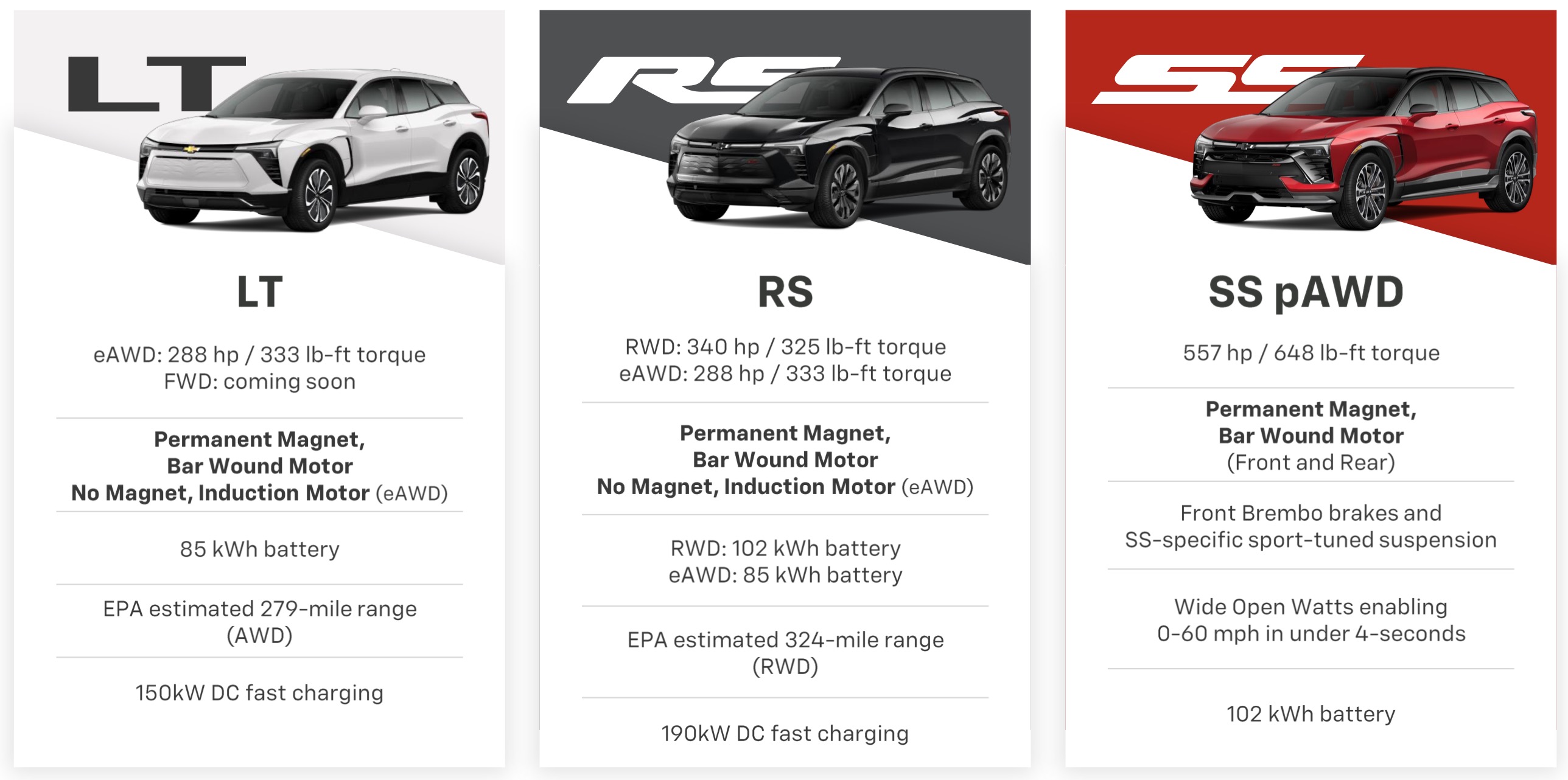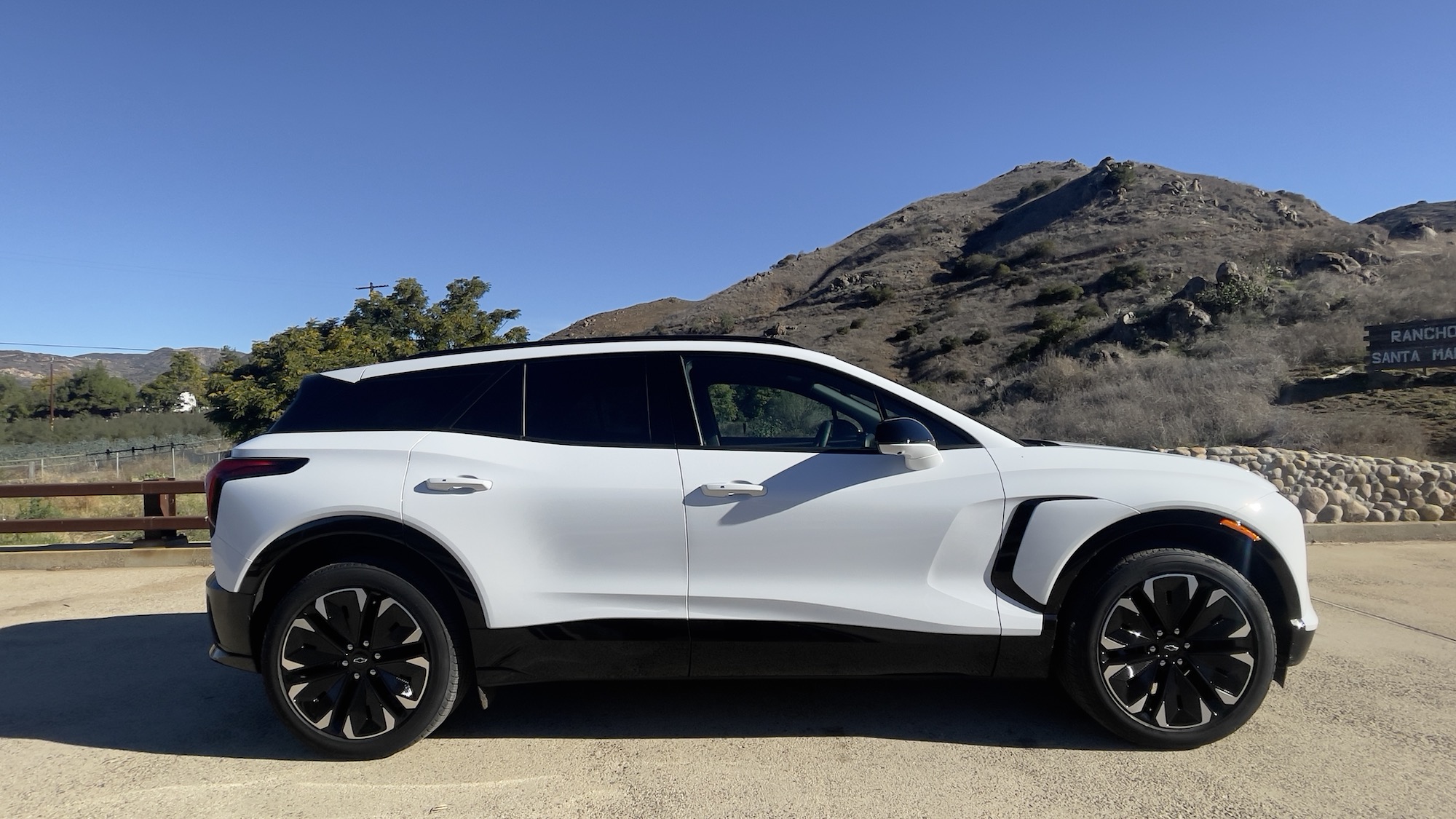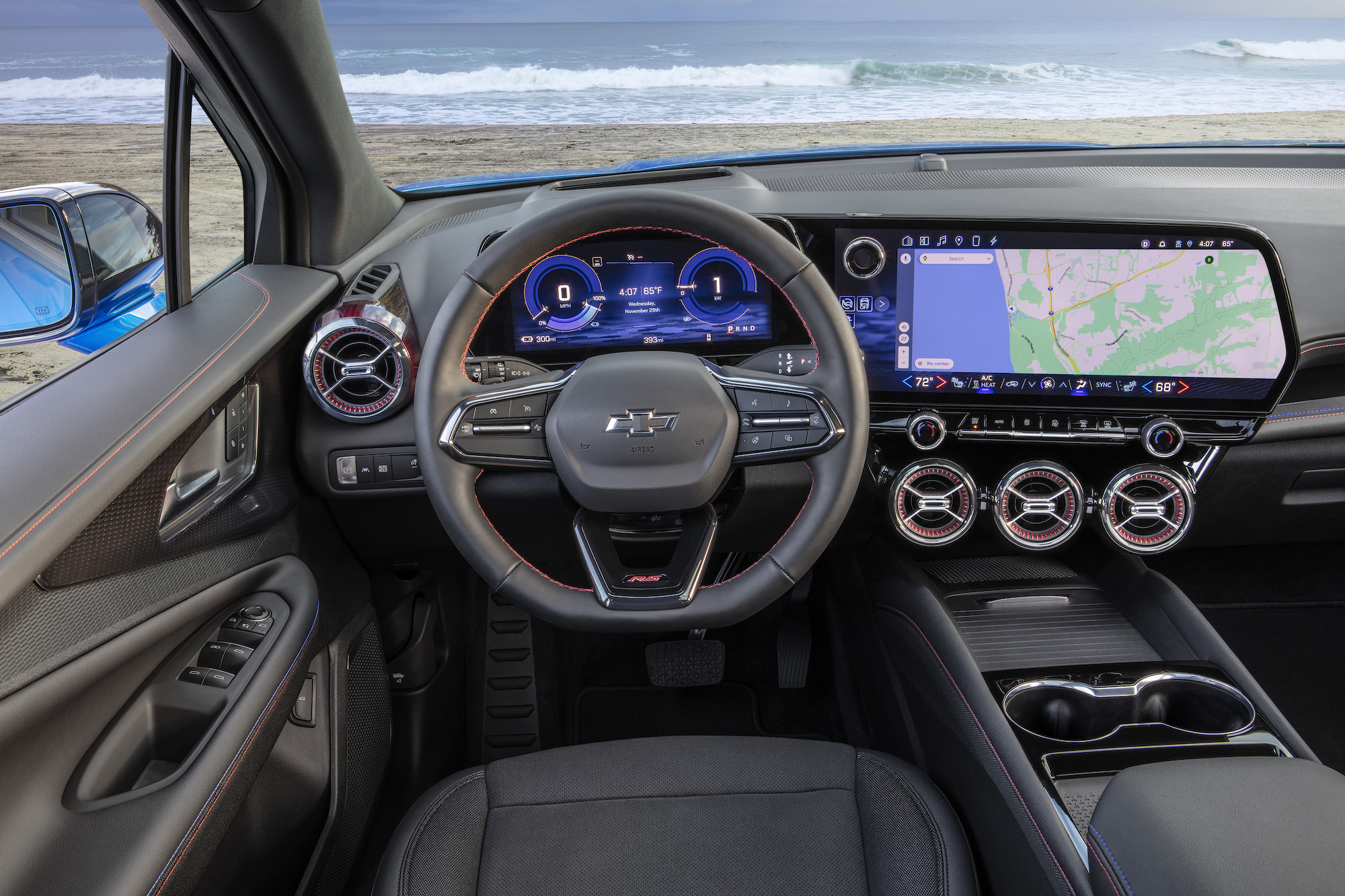GM has introduced a smattering of EVs in the past two years: the GMC Hummer SUV and its companion pickup truck, the Cadillac Lyriq and the Silverado EV pickup truck. But so far, none of them have had the success of the cheaper, smaller Chevy Bolt, the wedge-like all-electric hatchback that debuted nearly eight years ago.
To say the pressure is on for GM and the new Chevrolet Blazer EV — a vehicle designed to satiate Americans’ never-ending appetites for SUVs — is a bit of an understatement. The weight of GM’s EV success doesn’t rest entirely on the all-electric midsize SUV; the upcoming Chevrolet Equinox EV, GMC Sierra pickup and Cadillac Escalade IQ, all of which are expected in 2024, share that burden.
Still, the Chevrolet Blazer EV is a critical test piece for GM and Chair and CEO Mary Barra’s Ultium platform, the new electric architecture and accompanying Ultifi software first revealed in 2020 that is the foundation of the automaker’s EV plans.
TechCrunch recently drove out to San Diego to test the Chevrolet Blazer EV. The upshot? The Chevy Blazer EV hits a lot of the right notes, from the exterior design and interior touches to the user interface on its infotainment system and a well-planted drive. There are no egregious missteps either, although some might put getting rid of Apple CarPlay and Android Auto into that camp. And thankfully, Chevy has designed and produced an absolutely normal SUV — a welcome relief from the string of novelty EVs that have come on the market in recent years.
The big miss is the higher-than-expected price tag. While Chevrolet has said its cheapest version, the front-wheel drive LT trim, will be priced under $50,000, the other versions start at $56,715, $60,215 and $61,790, with the most expensive SS model not even announced yet.
That price range leaves me with this punchline: In spite of all of its wins, the Blazer EV, which is intended to be a volume seller, is simply too expensive for what it offers.
Nuts and bolts
First, the specs. The Chevy Blazer EV will be offered in three trims: the LT, RS and performance SS. The Chevy Blazer EV RS trim in all-wheel drive is already in production at GM’s factory in Ramos Arizpe, Mexico. The LT all-wheel and RS rear-wheel drive versions are expected to go into production in the “coming weeks” with others following later in the year, according to the company.
If this looks like a lot of choices, you’re right. Chevrolet is offering loads of options. A buyer not only has three trims to choose from — luxury (LT), rally sport (RS) and super sport (SS) — there are also two different 400-volt battery pack sizes and a choice between front, rear and all-wheel drive options.
The big unanswered question is whether this will thrill or overwhelm consumers?
Chevrolet has couched the head-spinning number of configurations as a competitive advantage that consumers will respond to, in contrast to Tesla, which has taken the EV sales lead with a less-is-more business model. From the outside, it could be construed that Chevrolet is offering all of these options because it isn’t clear what consumers actually want. If that’s the case, I would expect those choices to become more limited in the future as Chevrolet homes in on what consumers are buying.
The press drive held in San Diego put reporters behind the wheel of the rear-wheel and all-wheel drive versions of the Chevy Blazer EV RS trim.
The RWD RS equipped with a 102 kWh battery pack has an EPA certified range of 324 miles and a powertrain that provides 340 horsepower and 325 pound-feet of torque. That RWD version, which has a bit more pep in its step and longer range, starts at $61,790. The RS AWD starts at $60,215.
A quick word about the all-wheel drive powertrain, which is notably branded eAWD. In this powertrain, there is a 241-horsepower permanent-magnet synchronous motor that powers the front wheels and a 90-horsepower induction motor at the rear axle. That rear motor isn’t working all the time. Instead, customers should think of this as an assistant motor that steps in if the roads are slippery or as they hit the accelerator.
Chevy Blazer EV: Like, love and loathe
Chevrolet, or more like its parent GM, made a strategic decision with this midsize SUV when it decided to give it the Blazer badge. After all, the gas-powered Blazer lineup still very much exists and will share the same dealer floor space. The name, however, is where the similarities end, with perhaps the exception of having almost identical lengths.
It all diverges from there. The Blazer EV has a longer 121.8-inch wheelbase — nearly 10 inches longer than the ICE version — and it’s a skosh wider too. Those specs combined with a lower roofline and athletic stance give the Chevy Blazer EV a sleeker appearance than its gas-powered cousin.
There is a lot to like, and even love, about the Chevy Blazer EV. Loathe? Maybe one or two items made my list.
Opinions on the exterior will likely vary; here at TechCrunch it’s safe to say some folks hated it. But you have to give GM credit for giving the Chevy Blazer EV a personality with some standout exterior features that keep it from looking like yet another homogeneous Vitamin E pill-shaped nugget. The vehicle is available in eight colors, with the “radiant red metallic” and “galaxy grey metallic” as the options that best highlight the curves and edges of the Blazer EV.
Notably, the automaker does this without making the Blazer EV look like a novelty car. That edgy-without-being-silly vibe continues into the cabin — a place where the vehicle really shines, with a few exceptions.
Chevrolet makes the most of the Blazer EV’s wide stance, a decision that leaves the driver and its passengers with plenty of room; including 59.8 cubic feet of rear cargo space. That roomy, spacious feel even extends to the seats themselves. While the seats were not the most comfortable I’ve ever experienced, they are clearly designed to fit a range of sizes and shapes.
Once inside the Blazer EV, customers won’t be able to miss the large 17.7-inch central touchscreen and the 11-inch instrument cluster placed directly behind the steering wheel. A vehicle with a large touchscreen doesn’t mean that there’s functioning software or that’s it’s easy to use. Thankfully, the Blazer EV, the first Chevy vehicle with the Ultifi software platform, gets most of the job done.
Let’s start with the UX, or user experience. The Chevrolet Blazer EV has a combination of physical knobs and buttons along with that big ol’ touchscreen. Chevy nails the balance between these options and there’s plenty of overlap for those who only want to use the touchscreen to operate the HVAC and other features.
My favorite features: A large physical knob is attached to the touchscreen (somewhat reminiscent of the knob on the Ford Mustang Mach-E) and icons on the far left of the screen that act like shortcuts to one-pedal driving. There are actually a couple of these shortcut icons clustered together, but the one-pedal driving icon is by far the most useful.
Many, most recently Ford CEO Jim Farley, have knocked GM for abandoning Apple CarPlay and Android Auto, which projects a user’s phone to the center screen. My experience behind the wheel and in the passenger seat left me less wary than before.
The Chevy Blazer EV is equipped with Google Built-in, which is powered by its Android Automotive operating system and integrates Google services including Google Maps and Google Assistant directly into the vehicle. The Google Play Store, YouTube and third-party apps such as Spotify are also available. This translates to fairly smooth operations for the user and a far better experience than what many other wonky infotainment systems offer. Although it should be noted that in the beginning of my drive I had to switch out vehicles due to a software bug that didn’t allow access to any of those features. This should be fixed with a software update and hopefully won’t be a lingering issue.
As for those misses: The operation of the stock to shift into neutral, drive and reverse is awkward and the “sport” mode is, well not exactly sporty. Despite the littlest of extra oomphs off the line, there didn’t appear to be any difference from the normal drive option called “tour.” The Chevy Blazer EV RS doesn’t have controlled or active suspension, which means switching between modes doesn’t change the ride feel. The steering feedback was also less than inspiring in the RS.
That might seem rather picky considering all of the vehicle’s wins. But for any vehicle priced above $60,000, expectations should be high.



